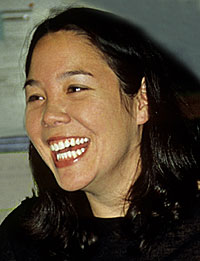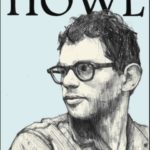How did you get started traveling?
I started crossing borders when I was sixteen. By the carloads, and sometimes van-fulls, my high school friends and I would take our fake IDs and lie our way into the Tijuana nightclubs. We lived in San Diego, CA, about forty minutes north of the Mexican border, where it was legal to drink at eighteen. Most of the time we’d park stateside, then walk over to our favorite bars and clubs. Even though the agenda was to drink, dance, and find someone cute to kiss, it still captured many of the same aspects of travel that I learned as an adult. Such as:
- Figuring out how to get from one point to the other (whether walking from a good bar to a better bar or bartering with taxi drivers)
- Discovering the ins and outs of the local cuisine (taco stands, bacon-wrapped hotdogs, and ballenas — large bottles of beer).
- Experimenting with what gear works and doesn’t work (wear jeans and you can have your fun without the machismo catcalls; wear a short miniskirt and you’re going to get your ass grabbed)
- Speaking and reading a foreign language to get what we wanted (how many tacos or beers and at what price).
How did you get started writing?
I’ve always been inspired to pick up a pen or pencil and record my thoughts. I started keeping a journal at 12, wrote bad love poetry in the ensuing six years, and tried out a short story or two for my high school English classes. But my interest in travel writing began after college when I discovered Tim Cahill’s “The Howling,” in a basket full of old Outside magazines at a mountaineering store while living in Lake Tahoe.
What do you consider your first “break” as a travel writer?
In 1999, my story “Chinese Like Me” was published in A Woman’s Passion for Travel. It was my first byline of decent size, and I read it at Book Passage with the book’s editors Marybeth Bond and Pamela Michael. It meant a lot to me because it also came from my first trip overseas when I went to Hong Kong to witness the hand-over.
As a traveler and fact/story-gatherer, what is your biggest challenge on the road?
Keeping my mouth shut about a story. If I’m in the middle of something that is “story worthy,” it usually means that it’s an adventure that I’d like to report home about. I’ve found that when I do the talking before the writing, I lose the juice. These days I’m focusing more on getting my notes down rather than sharing the experience over the phone or in email.
What is your biggest challenge in the writing process?
Grammar. I struggle with line editing and have about as good of an eye for it as I do an ear for music. My next step in conquering this ailment is to make a pledge of reading The Elements of Style cover to cover, repeatedly, until I can test out.
What is your biggest challenge from a business standpoint? Editors? Finances? Promotion?
Actually, the promotion side of the business is my favorite part. Author readings, writing groups, literary salons, setting up media reviews, and meeting other travel writers on the road is second nature to me. I’m much more challenged by tearing myself away from this part of the game to sit still and write the next piece.
Do you do other work to make ends meet? If so, what kind of work?
Making ends meet as a writer is difficult. I’ve never been interested in writing full time, but I’ve found that attempting to do it part time isn’t any easier. It’s not simple to find and keep a full time job that will allow for more travel, let alone book tours. In my eight years in publishing, I learned that I like the publicity and marketing side of the business the best. So, I do part time publicity for both print and online travel businesses to make money between books. Currently I’m at the crossroads of seeking employment and have yet to take sides with one or the other — print or online media. Until I’m forced with a decision, I’d like to learn more about both, and continue hunting for any job that pays me to stay connected to writers.
What travel authors or books might you recommend and/or have influenced you?
I met Larry Habegger at Book Passage when Travelers’ Tales had just released their second book, Mexico. I came on as their first intern shortly there after in January of 1995. During the course of the next five years I discovered dozens of established travel writers, and watched as several built their careers right in front of me. Marybeth Bond went from one book to five, Pamela Michael from author to editor, and I witnessed Richard Sterling build his career as both an expert in travel food writing and as a San Francisco guidebook writer. Today he has more than a dozen books to his name.
I spent most of my twenties employed at Travelers’ Tales. In these years, publisher James O’Reilly and executive editor Larry Habegger were not only sharing their knowledge of writing with me, but also teaching me about love and the value of friendship. I watched the discipline and dedication that they spent on their fifteen-year newspaper column World Travel Watch. This was a first hand lesson about the late nights and non-glamorous side to getting a byline. Sure this was an invaluable lesson, but the great one was in watching them publish more than 70 books while still keeping their children a priority.
My desire to travel grew weekly from working on the Travelers’ Tales series. It was impossible for me to work on stories from France, Nepal, Australia, and Italy without wanting to go explore them myself. And from reading which stories finally made it into the final manuscript, my esteem of what good travel writing was set and reset with each book.
Throughout the years at Travelers’ Tales my writing has been inspired by the far-flung adventures of Rory Nugent, the honest and illuminating writing of Anne Lamott, and lesser-known authors like the humorous Germaine Shames and Robert Matthews. I’ve also had the pleasure of meeting the Jan Morris, Bill Bryson, Pico Iyer, Peter Matthiessen, Isabel Allende, and the man who got me interested in this craft, Tim Cahill. I would recommend any of these authors to study. All of them, and many others, are a part of the Travelers’ Tales series.
What advice and or warnings would you give to someone who is considering going into travel writing?
The most common response to this question is “Don’t quit your day job,” “Read, read, read. Write, write, write,” and “Start in your own backyard.” These are all valid answers, but I would also add — don’t be intimidated. If you want to become a travel writer, it is entirely within your reach. It’s not rocket science. Travel writing will only remain a dream job, if you keep it in your dreams. Acquire your bylines one by one, take classes from travel writers with solid experience, attend author events at local bookstores, and take advantage of the free resources around you. Web sites like WrittenRoad.com and Vagablogging.net are loaded with industry information that we’ve been willing to share. Also, don’t discount what’s available at your library. Bacon’s media guides in most library research sections will give you the contact information for travel magazines and newspapers. Do your homework on the publications you want to break into, and go for it. Again and again.
What is the biggest reward of life as a travel writer?
The greatest reward I’ve encountered by being a part of the travel writing community is the friendships I’ve developed with like-minded individuals. Until you have a few books under your belt, or get into the one or two magazines that your family reads, the occupation of a travel writer can be viewed as counter-cultural. Meeting other travelers and writers who “get” this one section of your life can be refreshing, if not a mind-numbing homecoming.
Equally satisfying is getting to meet novice writers and encourage them to pitch their stories, go after first bylines, and write their travel memoirs. To witness their progress and see a shift in confidence and competence, is as satisfactory as making a child fall over laughing.





